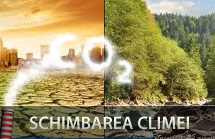Review: The silver lining of climate change 02.01.2011 imprimare
Votează: 0.0/5 (0 Voturi ) |
http://www.edmontonjournal.com/business/Review+silver+lining+climate+change/4049557/story.html
An ancient Chinese curse says, “May you live in interesting times.” This utterly absorbing book, subtitled Four Forces Shaping Civilization’s Northern Future, forecasts interesting times indeed, especially for the eight nations that comprise the Arctic Rim countries: Canada, the U.S., Russia, Iceland, Greenland (Denmark), Norway, Sweden and Finland.
Laurence C. Smith, a scientist and professor of geography and earth sciences at the University of California Los Angeles, argues that as global warming progresses, sea levels will rise, flooding coastal plains and driving a growing world population inland, just as climate change turns the rich agricultural areas of countries that grow most of the world’s food into desert. But the same forces that cause this will result in a northward shift in population and agriculture and a raw-materials bonanza — oil, natural gas, minerals and water resources — for Arctic Rim countries as sea ice recedes to allow easy navigation of northern transportation routes.
These countries will become increasingly prosperous, powerful and politically stable, Smith argues, while those closer to the equator will face water shortages, aging populations, crowded megacities and environmental disasters made worse by the rising cost of energy.
This book will be of great interest to Albertans, as Smith predicts a glowing socio-economic future for Edmonton, Calgary, Fort McMurray and all places in-between. In fact, his global “thought experiment” about the future begins with a prologue describing his first encounter with Fort McMurray and the oilsands, and his confession that, based on his research, his retirement portfolio is heavily stocked with Canadian mutual funds.
Bold assumption
Packed with stunning photographs, maps and tables, this book is well written and entertaining as well as informative, thanks to Smith’s sly sense of humour. It combines lessons of geography and history with model projections and data analysis to describe “with reasonable scientific credibility what our world might look like in forty years’ time, should things continue as they are now.”
The kicker is that last phrase. What if things don’t continue as they are now? Smith identifies four global forces driving dramatic change: demographic trends (the world’s population hitting 9.2 billion from today’s 6.8 billion, coupled with mass migrations), natural resource demand and depletion, climate change, and globalization. To avoid an extreme approach to prediction, he states at the beginning the rules of his thought experiment: no “silver bullets” (incremental advances in technology are assumed, but extreme breakthroughs are not); no Third World War (radical geopolitical change); no “hidden genies” (a pandemic, an asteroid strike); and (the controversial part) the computer models are good enough. Smith says these rules are to ensure conservatism in his argument, which is good, but I am sure most people would agree that silver bullets and hidden genies within the next 40 years are not only possible but inevitable, which pretty much renders the whole exercise moot.
But Smith is an excellent storyteller and drives home points with great effect. One example: Smith, living in Los Angeles, which feeds off a Colorado River that is so stressed it doesn’t even reach the sea anymore, says he and his neighbours pay $100 a month for cable TV, while his last water bill was $20.67. He says this is lunatic, and it’s impossible not to agree. If people had to pay the real price of water, well, let’s just say there wouldn’t be any fountains in Las Vegas or lawns in Arizona.
In the final two chapters, Smith explores some “alternate endings.” He considers issues such as reversal of globalization, the effects of carbon release from thawing tundra, development of an equitable global water trade and so on. He also addresses a chilling Pentagon report entitled An Abrupt Climate Change Scenario and Its Implications for United States National Security. Don’t read this part just before you try to go to sleep.
|
|





